How Grinder Calibration Trips Up Most Beginners
For many coffee lovers just starting out, the grinder feels like the least exciting piece of equipment — an afterthought compared to shiny kettles or beautiful brewers. But make no mistake: grinder calibration is one of the most critical (and misunderstood) aspects of brewing great coffee. And it’s where many beginners go wrong.
You can have fresh beans, precise measurements, and the perfect pour — but if your grind size is off, none of it will matter.
What Is Grinder Calibration, Really?
Grinder calibration simply means adjusting your grinder to produce a specific grind size suited for your brewing method. It’s not just about choosing "fine" or "coarse" — it’s about dialing in the exact texture of the grounds based on how fast or slow you want water to pass through them.
Each brew method has an ideal range:
-
Espresso: Very fine, like powdered sugar
-
Pour-over / Drip: Medium-fine to medium
-
French Press: Coarse, like sea salt
-
Cold Brew: Extra coarse
Even small changes in grind size can drastically affect extraction time and flavor.
The Cascade Effect of the Wrong Grind Size
Beginners often get tripped up by grind size because its effects are subtle at first — but they compound quickly:
-
Too Fine: Over-extraction. Bitter, dry flavors. Slow brew times.
-
Too Coarse: Under-extraction. Sour, flat coffee. Watery cups.
-
Inconsistent Grind: Mixed results in one cup — over- and under-extracted flavors competing with each other.
You can follow every step of a brew guide perfectly and still end up with bad coffee if your grind size isn’t aligned.
Why Pre-Ground Coffee Is a Problem
Buying pre-ground coffee is convenient, but it removes control over one of the most important variables. Most pre-ground coffee is medium grind, designed to be “universal.” But coffee isn’t one-size-fits-all — a grind perfect for drip will ruin an espresso shot or clog a French press filter.
Grinding fresh also means your coffee is more aromatic and flavorful. But most importantly, it gives you the ability to adjust based on taste.
The Role of Burr vs. Blade Grinders
Not all grinders are created equal. Blade grinders chop beans unevenly, leading to inconsistent particle sizes and erratic flavor. Burr grinders, on the other hand, crush beans between two surfaces for a much more uniform result.
If you’re serious about improving your coffee, a burr grinder is a must. Look for one with clear grind settings and the ability to make micro-adjustments — especially important if you switch between brew methods.
Signs You Need to Adjust Your Grind
Not sure if your calibration is off? Here are a few red flags:
-
Your pour-over takes too long or too short (aim for 2:30–3:30)
-
Espresso shots are pulling in 10 seconds or dragging past 40
-
Your French press has too much sediment or a hollow taste
-
Coffee consistently tastes either too sour or too bitter
Small tweaks in grind size can fix most of these issues — without needing to change anything else.
How to Start Dialing In
-
Brew, taste, adjust: Make one change at a time and track the result
-
Keep everything else constant: Use the same beans, ratio, and water temp
-
Use a timer: Extraction time is a key indicator of grind accuracy
It’s a learning curve, but one that rewards attention.
Where Design Meets Simplicity
Many beginners feel intimidated by grinder calibration because it seems overly technical. But modern brewers and tools are evolving to simplify the process. Machines like those from Ratio Coffee are designed to emphasize consistency and reduce guesswork — making them a great companion for anyone working on mastering grind control without sacrificing the ritual of brewing.
Pairing thoughtful design with quality grinding is one of the best ways to ensure your coffee always starts with a solid foundation.
Don’t Let the Grind Trip You Up
Grind size may be invisible at first glance, but it shapes everything about your brew. For beginners, learning how to calibrate your grinder — and understanding why it matters — is one of the biggest steps toward brewing like a pro.
It’s not about chasing perfection every time. It’s about knowing how to adjust when something tastes off, and having the tools to make those changes.
Pay attention to the grind, and you’ll unlock the full potential of your beans — one delicious cup at a time.
Frequently Asked Questions
How do I know if my grind is too fine or too coarse?
If your brew is bitter and slow, it may be too fine. If it’s sour and finishes too quickly, it may be too coarse.
Can I calibrate a blade grinder?
Not really. Blade grinders don’t offer consistent or adjustable grind sizes. Switching to a burr grinder is highly recommended.
How often should I recalibrate my grinder?
If you change beans, brewing method, or even room humidity, it’s good to check calibration. Otherwise, reassess every few weeks.
Do I need an expensive grinder to get good results?
No, but consistency matters. Entry-level burr grinders can still outperform expensive machines if they offer consistent output.
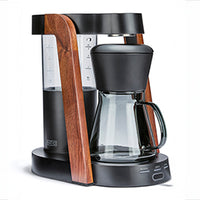 Ratio Eight S2
Ratio Eight S2
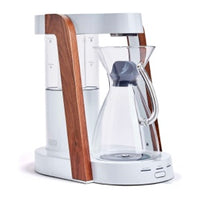 Ratio Eight Original
Ratio Eight Original
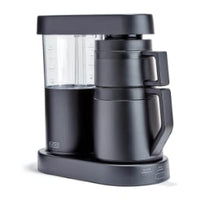 Ratio Six
Ratio Six
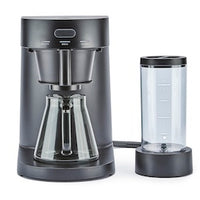 Ratio Four
Ratio Four
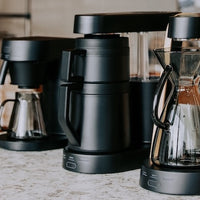 Compare Machines
Compare Machines






